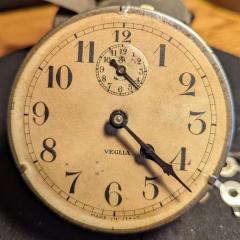Damas GTSP pocket watch
-
Recently Browsing
- No registered users viewing this page.
-
Topics
-
Posts
-
By RichardHarris123 · Posted
Hello and welcome from Leeds, England . No idea about Citizen but someone will advise soon. -
By watchweasol · Posted
Hi Chris and welcome to the forum, The hands and knees is by way of the rite of passage, we have all done that at some time or another. Added a bit of citizen gen plus the T Z glossary Citizen Technical Information.pdf TZIllustratedGlossary.pdf -
By the way, I opened my watch, looked under a magnifying glass, there is simply no grease, the screws are without traces, the slots are intact.I think it's just a matter of maintenance.there are no rotor marks on the body. And to remove the strap from yours, just press on the 1st side,and slightly move the strap, then on the other side and it will come off.
-
Hi My name is Chris. Just started trying to learn about watch and clock repair as a result of repairing my fathers old 1890s police station clock (about a year ago). The clock was Ok, but having graduated to pocket watches and then wrist watches, despite the really excellent stuff on Youtube, I am struggling a bit. As a retired engineer, I find the engineering exquisite, but a bit on the fiddly side. I have done a few practice watches with a little success but failed a few, but have had success with Seiko 7005s, 7009s etc, but have just attempted a citizen 5430. Nightmare. My wife thought I had found religion as I spent so much time on my knees with my eyes to the floor looking for springs. Got through that and found that the balance is shot. Trying to source one or something that will fit from the citizen range has me totally perplexed. Tried Ebay, Cousins etc without luck. Any advice as to alternatives that will fit or alternative sources would be gratefully received.
-
Agreed, this is puzzling. Can you ask questions or inspect the lots before bidding? My Boley & Leinen Reform face plate is dia. 95mm exactly. It's possible that 4 inches is a slightly too large approximation, but why then make the distinction to 3 11/16 for the sake of 8mm? If the larger ones are truly 4" then they will clash with the bed, but then I have no idea which 8mm lathe would take them. All 8mm lathes have spindle height 50mm or less, as far as I know. The spindle height is, as you say, standard 50mm for W.W.
-






Recommended Posts
Join the conversation
You can post now and register later. If you have an account, sign in now to post with your account.
Note: Your post will require moderator approval before it will be visible.